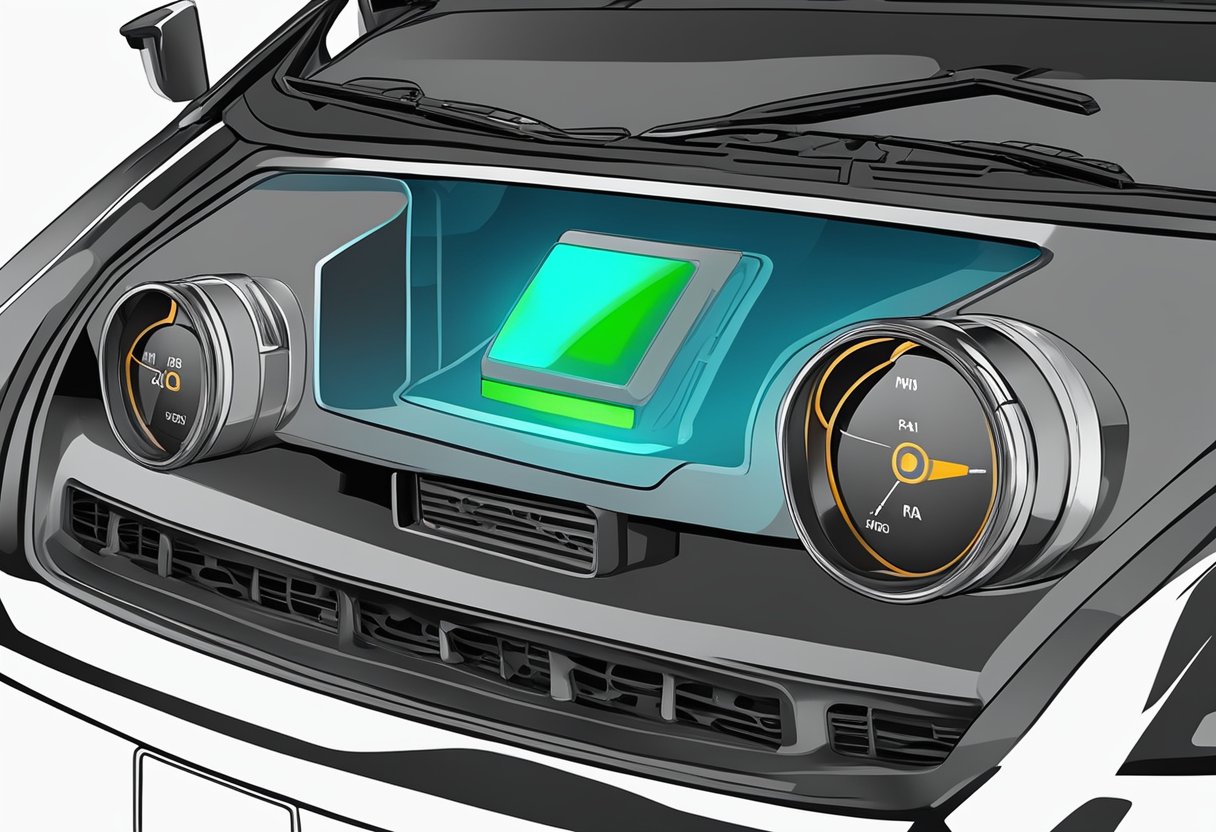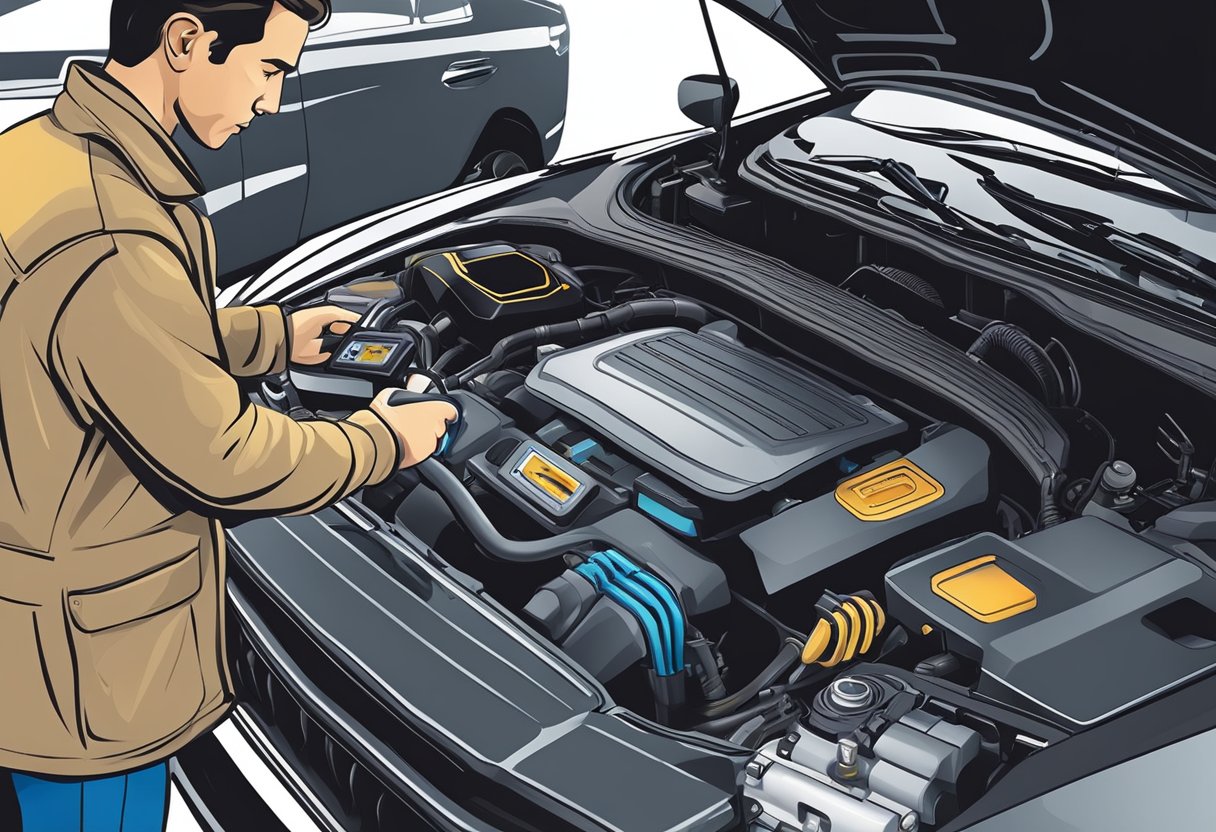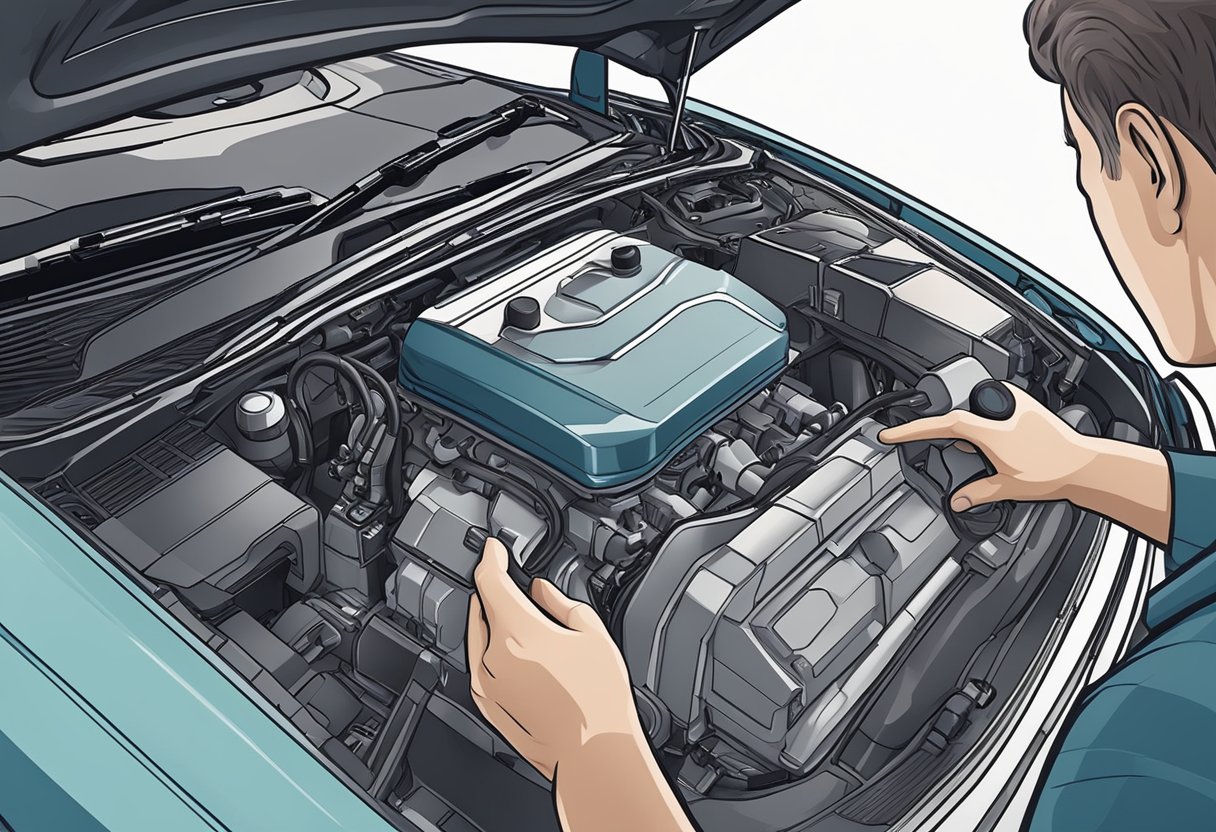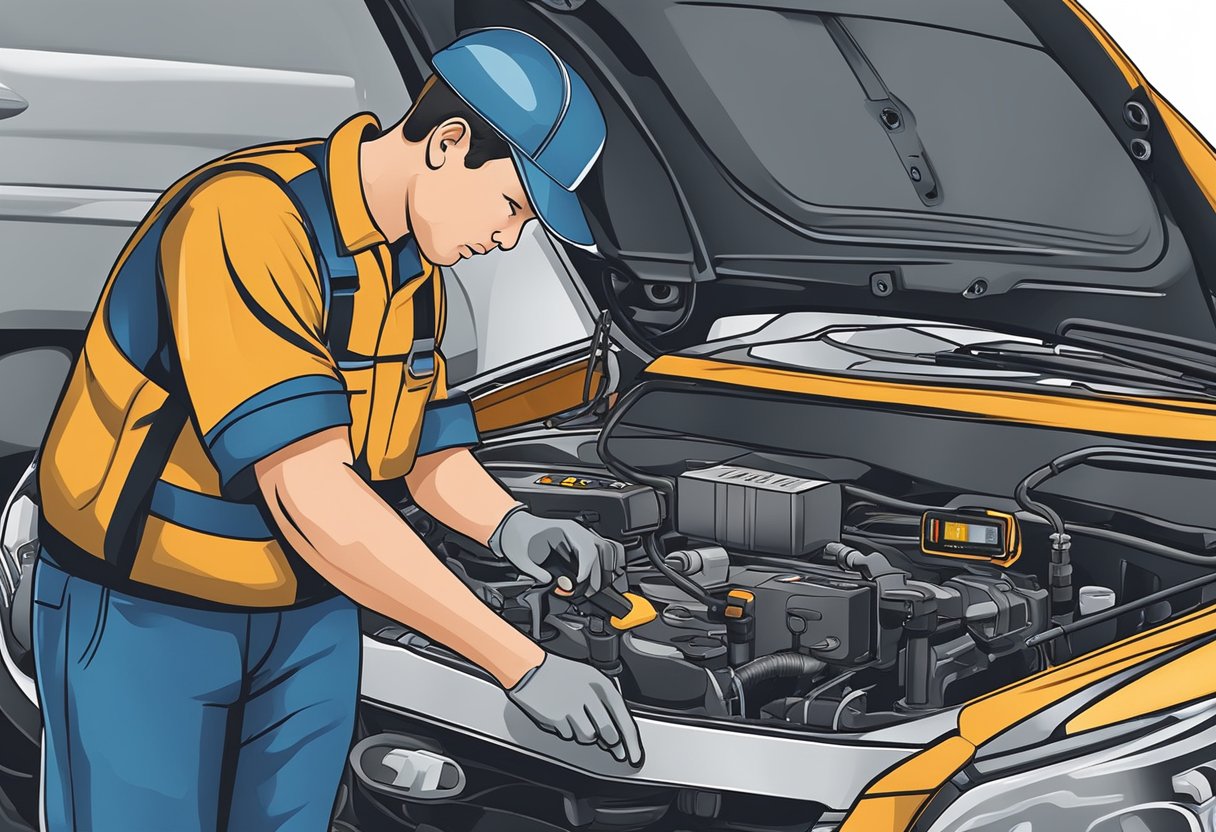If you are experiencing engine performance issues and have encountered the P0103 trouble code, it is likely that there is a problem with your Mass Air Flow (MAF) Sensor. This code indicates a high input signal from the MAF sensor, which can have a significant impact on your vehicle’s performance. The MAF sensor is an important component of your vehicle’s air intake system, responsible for measuring the amount of air entering the engine and relaying that information to the engine control module (ECM).
When the MAF sensor voltage signal is too high, it triggers the P0103 code, indicating a potential issue in the circuit. Symptoms of P0103 Engine Performance may include a decrease in power, acceleration, and fuel efficiency. In some cases, the vehicle may not start at all. The P0103 code can be caused by a variety of factors, including a faulty MAF sensor, an issue with the MAF’s circuit, and PCM problems.
Understanding P0103 Code
If you’re experiencing problems with your vehicle, such as erratic idle, stalling at idle, or difficulty starting, you may have encountered the P0103 code. This code refers to a Mass or Volume Air Flow (MAF) Sensor problem that can cause engine performance issues. In this section, we’ll dive deeper into the technical description of the P0103 code and its common causes.
Technical Description
The P0103 code stands for “Mass or Volume Air Flow (MAF) ‘A’ Circuit High Input.” This means that the powertrain control module (PCM) detected a high voltage output coming from the MAF sensor. The MAF sensor measures the amount of air entering the engine and sends this information to the PCM. The PCM uses this data to calculate the appropriate fuel delivery to the engine.
When the MAF sensor output voltage is too high, the PCM may assume that more air is entering the engine than is actually the case. This can cause the engine to run lean, leading to performance issues such as rough idle, hesitation, and reduced power.
Common Causes
There are several common causes of the P0103 code, including:
- A dirty or faulty MAF sensor: Over time, the MAF sensor can become contaminated with dirt, dust, and debris, causing it to malfunction. In some cases, the sensor may need to be replaced.
- Wiring or circuit issues: Damage to the wiring or circuit that connects the MAF sensor to the PCM can cause the sensor to send incorrect signals to the PCM, triggering the P0103 code.
- Intake leaks: Leaks in the intake system can cause unmetered air to enter the engine, leading to incorrect readings from the MAF sensor and triggering the P0103 code.
If you’re experiencing problems with your vehicle and suspect that the P0103 code may be the culprit, it’s important to have the issue diagnosed and repaired as soon as possible. Ignoring the problem can lead to further damage to your vehicle and potentially costly repairs down the line.
Symptoms of P0103
If your car’s onboard diagnostics system has detected a P0103 code, it means that there is an issue with the Mass Air Flow (MAF) sensor. This code indicates that the MAF sensor is detecting a high input signal. Here are some symptoms that you may experience if your car has a P0103 code:
Engine Performance Issues
One of the main symptoms of a P0103 code is engine performance issues. You may notice that your car is not running as smoothly as it used to. The engine may feel like it is struggling to get up to speed, or it may not have as much power as it used to. You may also notice that your car is idling roughly or stalling at idle.
Drivability Symptoms
In addition to engine performance issues, a P0103 code can also cause drivability symptoms. You may notice that your car is not shifting gears as smoothly as it used to, or that it is jerking or hesitating when you accelerate. You may also notice that your car is not responding as quickly to your throttle inputs.
Emission Problems
A P0103 code can also cause emission problems. If your car is emitting black smoke from the tailpipe, it may be running too rich. This means that it is burning too much fuel and not enough air. Alternatively, if your car is emitting white smoke from the tailpipe, it may be running too lean. This means that it is burning too much air and not enough fuel. In either case, your car may not pass an emissions test.
If you notice any of these symptoms, it is important to have your car diagnosed by a qualified mechanic. They can use diagnostic tools to determine the root cause of the P0103 code and make the necessary repairs to get your car running smoothly again.
Diagnosing the Issue
If you suspect that your vehicle has a P0103 code, you should diagnose the issue as soon as possible. Here are some steps you can take to troubleshoot and diagnose the issue:
Preliminary Checks
Before you start diagnosing the issue, there are a few preliminary checks you should perform. First, visually inspect the MAF sensor and its wiring for any damage or loose connections. If you see any issues, repair or replace the damaged components as necessary.
Next, check the air filter for any clogs or dirt buildup. A dirty air filter can cause the MAF sensor to give false readings, which can trigger the P0103 code. If the air filter is dirty, replace it with a new one.
Finally, check for any vacuum leaks in the intake system. A vacuum leak can cause the MAF sensor to give false readings, which can trigger the P0103 code. Use a smoke machine or propane torch to check for leaks.
Advanced Diagnostic Procedures
If the preliminary checks do not reveal any issues, you may need to perform some advanced diagnostic procedures. Here are some steps you can take:
-
Use a scan tool to check for any other codes that may be present. Other codes can provide clues as to what is causing the P0103 code.
-
Use a multimeter to check the voltage and ground signals at the MAF sensor. Compare the readings to the manufacturer’s specifications. If the readings are out of range, replace the MAF sensor.
-
Take the vehicle for a test drive and monitor the MAF sensor readings using a scan tool. If the readings are erratic or fluctuate wildly, there may be an issue with the MAF sensor or its wiring.
-
Use a smoke machine or propane torch to check for leaks in the intake system. If you find a leak, repair or replace the damaged components as necessary.
By following these troubleshooting steps, you can diagnose and fix the P0103 code on your vehicle. If you are not confident in your abilities as a technician or mechanic, it is best to take your vehicle to a professional for diagnosis and repair.
What Are the Common Causes of MAF Sensor Issues and How Can They Be Troubleshooted?
The p0101 OBDII trouble code signifies potential MAF sensor issues. Common causes include dirty sensor, air leaks, or faulty wiring. Troubleshooting involves visual inspection for dirt or debris, checking for air leaks, and testing the sensor with a multimeter. Replacing the sensor may be necessary if issues persist.
Repair and Replacement
Fixing the MAF Sensor
If cleaning the MAF sensor didn’t solve the issue, you may need to replace it. A faulty MAF sensor may cause the P0103 code to appear. You can test the MAF sensor using a multimeter to check its resistance. If it is out of range, then it needs to be replaced. You can also check the wiring harness and electrical connections for any damage or corrosion. If the MAF sensor is not getting power or ground, then the wiring harness or electrical connections may be at fault.
Addressing Related Components
If the MAF sensor and wiring harness are in good condition, then you may need to check the related components. The P0103 code can be triggered by a faulty PCM/ECM or a vacuum leak in the air intake system. Check the ground circuit and make sure that it is well connected and free of corrosion. A vacuum leak can cause the MAF sensor to read high air flow, leading to the P0103 code. Check the vacuum hoses and air intake system for any leaks. You may need to replace the vacuum hoses or repair the air intake system to fix the issue.
In summary, to repair and replace a P0103 code, you may need to clean or replace the MAF sensor, check the wiring harness and electrical connections, and address related components such as the PCM/ECM, vacuum system, and air intake system.
Preventive Measures and Maintenance
To avoid encountering the P0103 code caused by high input in the MAF sensor, there are several preventive measures and maintenance practices you can follow. These measures will help keep your vehicle’s MAF sensor functioning at its best and reduce the risk of encountering the P0103 code.
Regularly Check and Clean the Air Filter
The air filter is an essential component of the engine’s air intake system. It prevents dirt, dust, and other airborne contaminants from entering the engine. A dirty or clogged air filter can restrict the airflow to the engine, causing the MAF sensor to produce a high input reading. To prevent this, you should regularly check and clean the air filter according to the vehicle manufacturer’s recommendations.
Keep the MAF Sensor Clean
Dirt and dust particles can accumulate on the MAF sensor’s sensing element, causing it to produce inaccurate readings. To prevent this, you should periodically clean the MAF sensor using a specialized MAF sensor cleaner. Avoid using regular cleaning agents such as carburetor cleaner or brake cleaner, as they can damage the sensor.
Inspect the MAF Sensor for Damage
The MAF sensor is a delicate component, and it can be easily damaged by physical impacts or exposure to extreme temperatures. Regularly inspect the MAF sensor for any signs of damage, such as cracks or breaks. If you notice any damage, replace the MAF sensor immediately to prevent the risk of encountering the P0103 code.
Check the O2 Sensor and Air Temperature Sensor
The O2 sensor and air temperature sensor are two other components that work together with the MAF sensor to ensure optimal engine performance. A faulty O2 sensor or air temperature sensor can cause the MAF sensor to produce inaccurate readings, leading to the P0103 code. Regularly check and replace these sensors according to the vehicle manufacturer’s recommendations.
Check the PCM/ECM/ECU
The PCM/ECM/ECU is the brain of the vehicle’s engine control system. It receives input from various components, including the MAF sensor, and uses this information to adjust the engine’s fuel and air mixture. A faulty PCM/ECM/ECU can cause the MAF sensor to produce inaccurate readings, leading to the P0103 code. If you suspect that the PCM/ECM/ECU is faulty, have it checked and replaced by a qualified mechanic.
By following these preventive measures and maintenance practices, you can reduce the risk of encountering the P0103 code caused by high input in the MAF sensor. Regular maintenance of the MAF sensor and its associated components can ensure optimal engine performance and prolong the lifespan of your vehicle.
As an Amazon Associate we earn from qualifying purchases.















